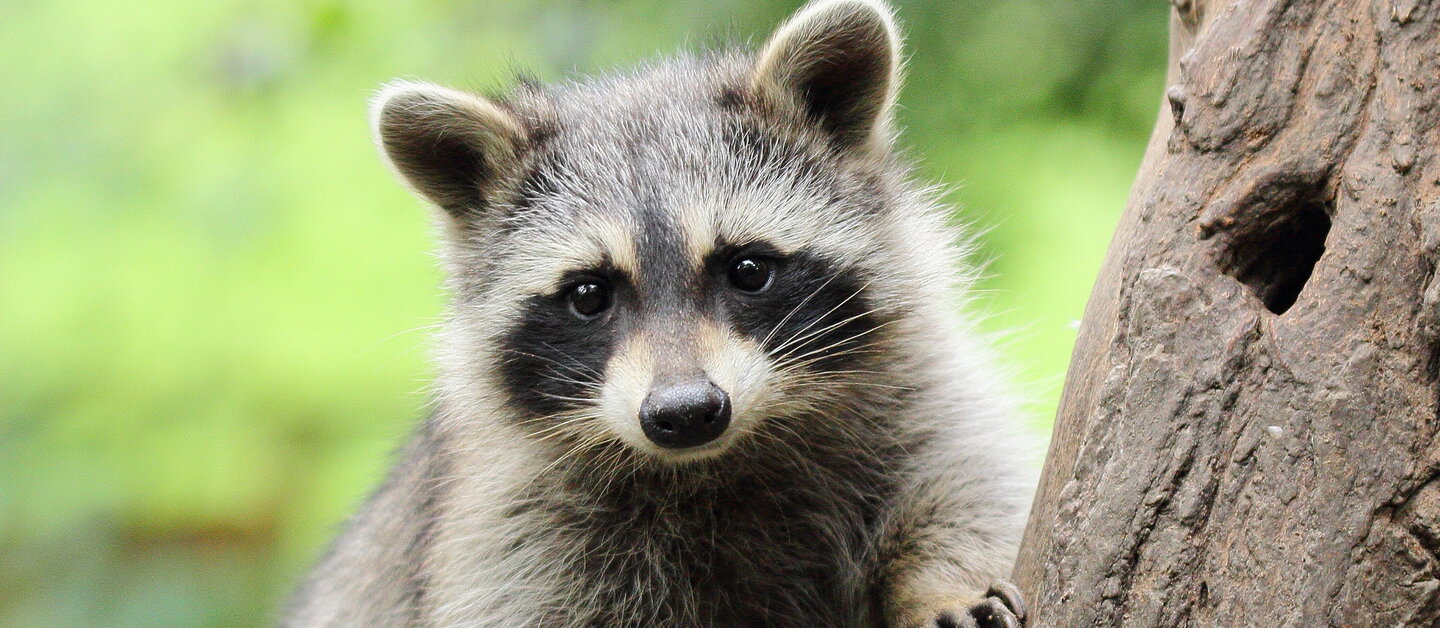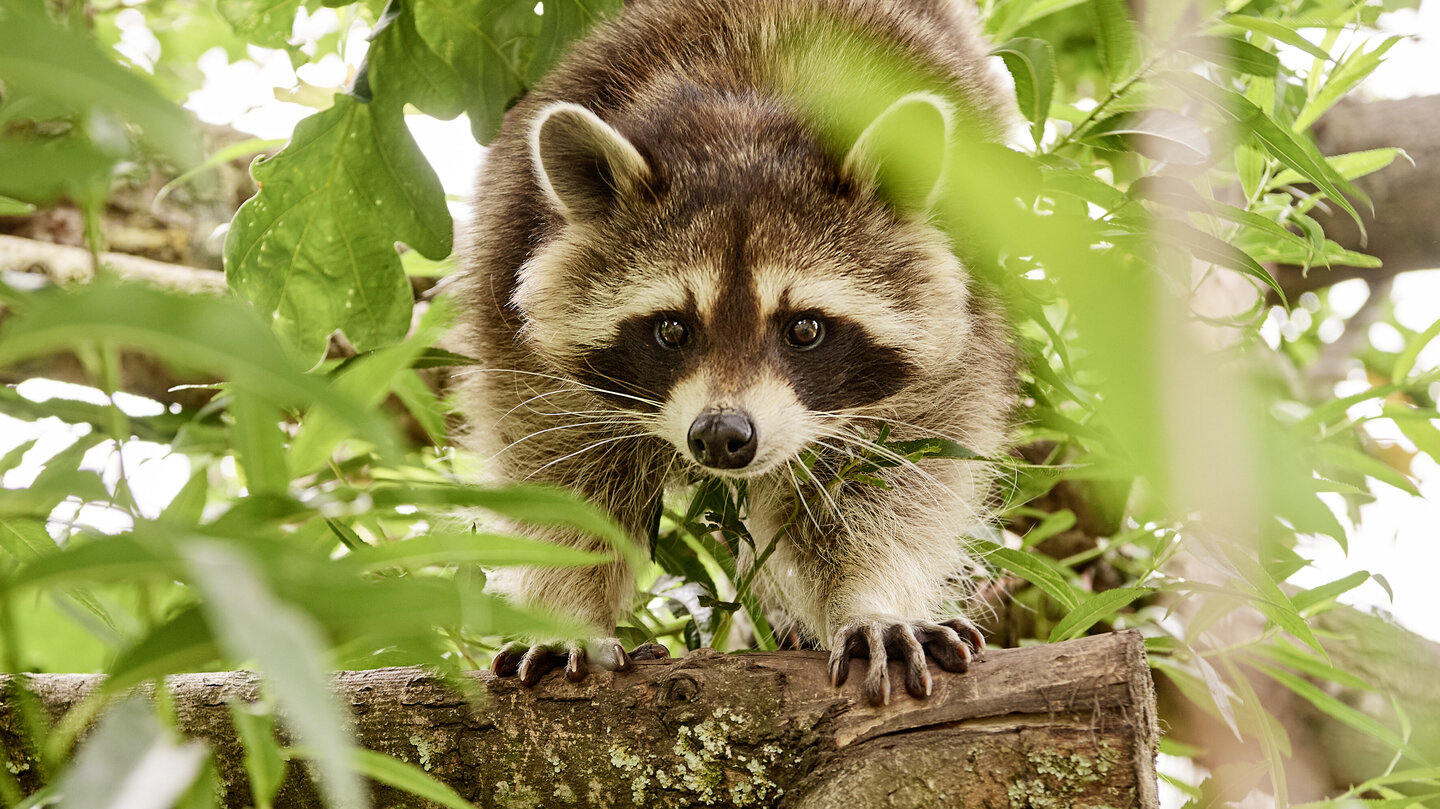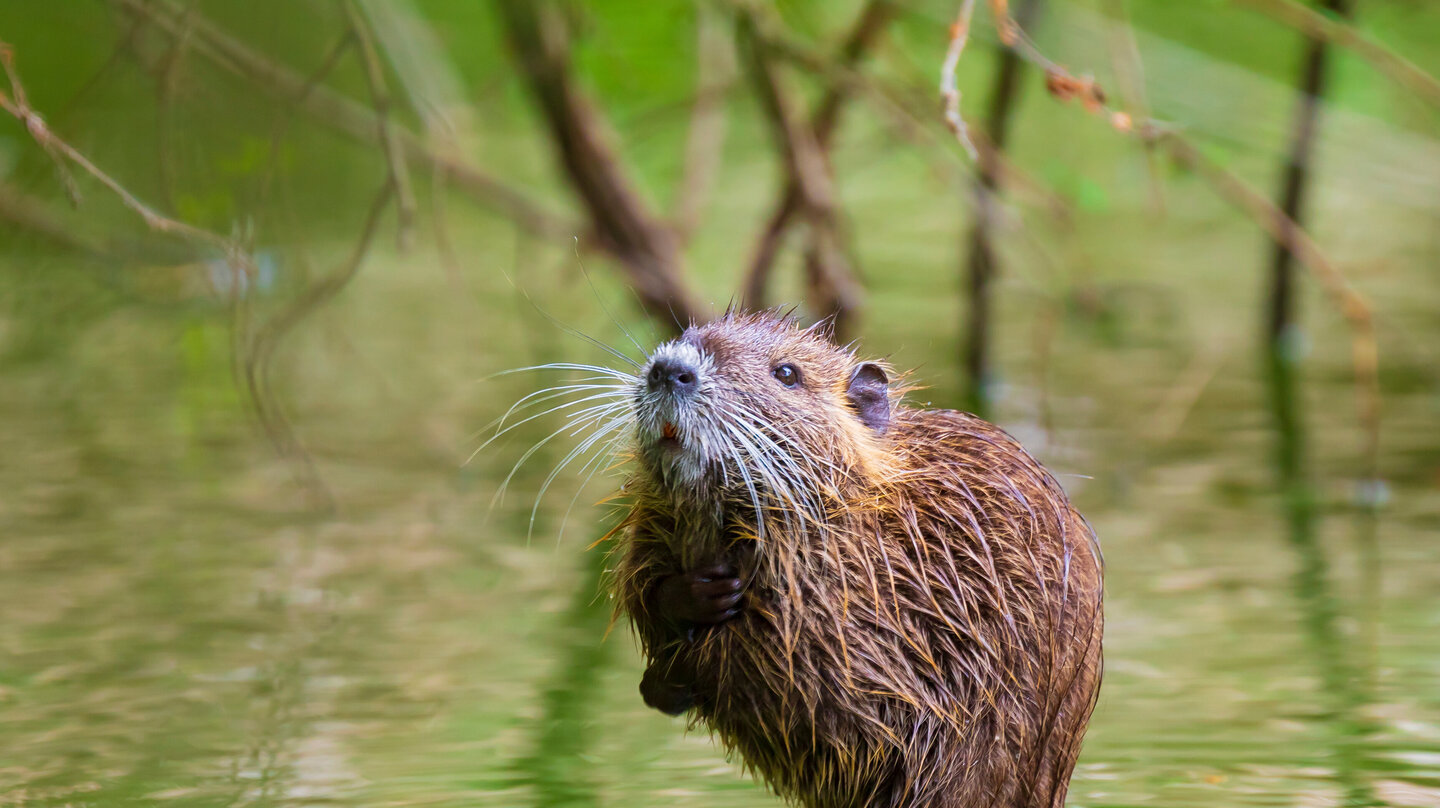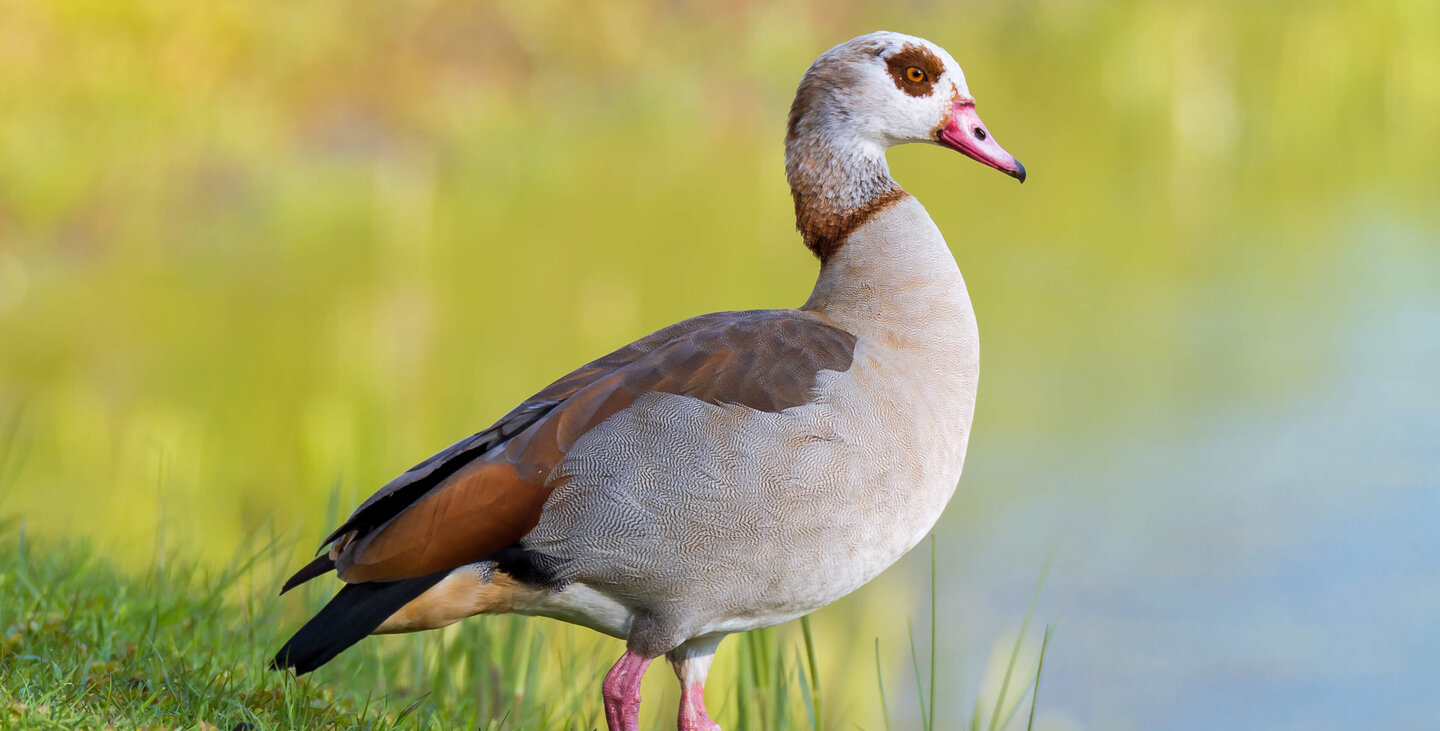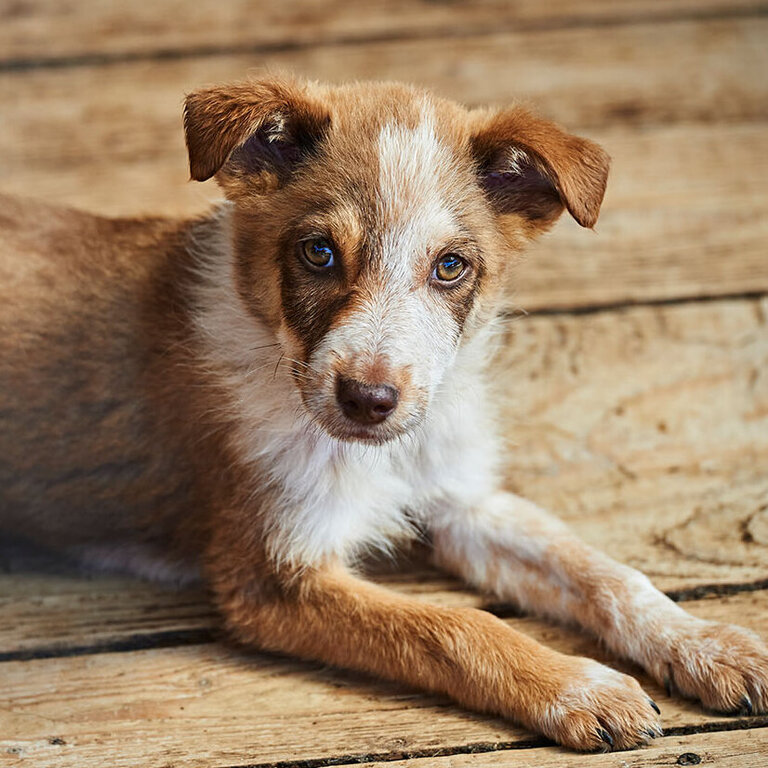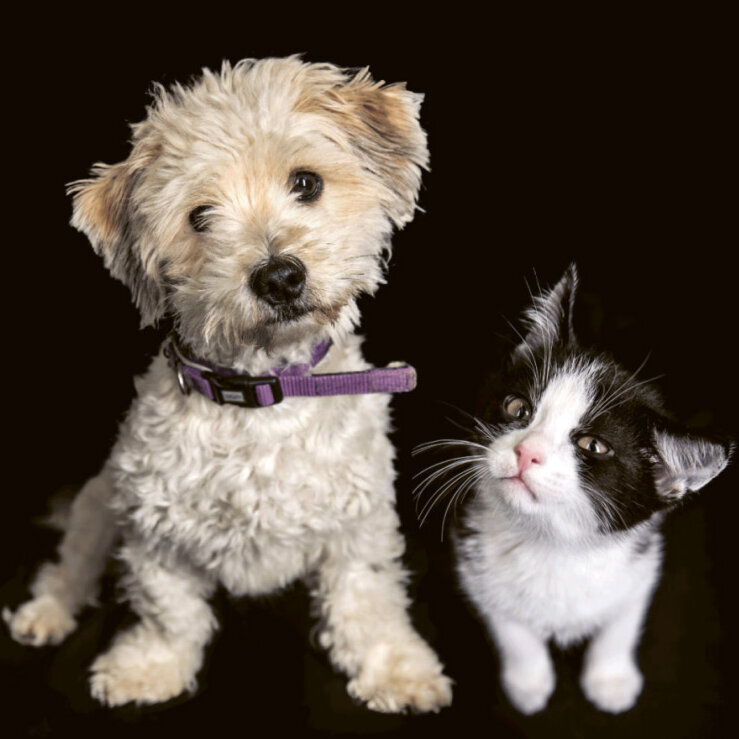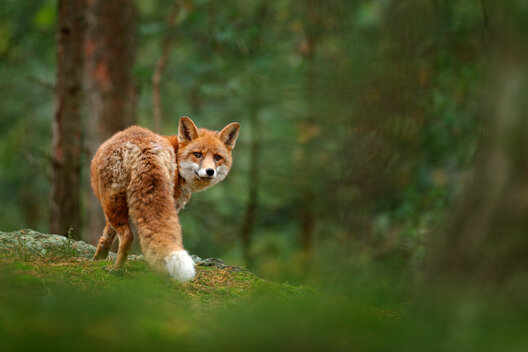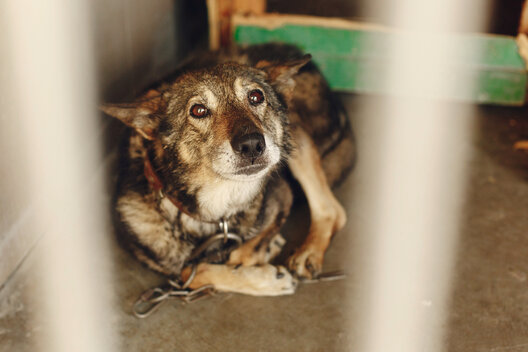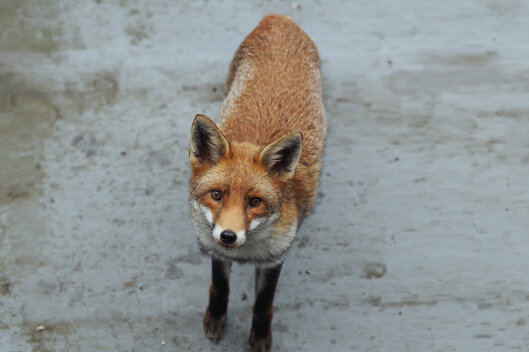Why nutrias, raccoons and co. struggle with prejudicesInvasive species: All information on alien animals
Animal species such as the nutria, Egyptian goose and raccoon are classed as invasive species in the EU. The way they are dealt with is often characterized by prejudice and is anything but animal-friendly. In most cases, the authorities rely on hunting.
What are alien and invasive species?
A so-called alien species has not migrated or flown across borders on its own. It was intentionally or accidentally introduced by humans from its natural range to another, foreign area or country and has managed to survive and subsequently reproduce there. Animals are considered invasive species if they spread in the new environment and this in turn has an impact on native species - for example by competing for food and habitats. They are therefore said to endanger native ecosystems. In some cases, however, they are also said to cause economic damage.
Which animal species are considered invasive?
The best-known animal species that are prejudged as invasive in the European Union and in Germany include raccoons, Egyptian geese and nutria.
The other 43 animal species that currently bear this stamp and are branded as dangerous to local animals, plants or humans are listed in the Union list of invasive species:
- New Zealand flatworm
- mitten crab
- American rusty crayfish
- Camber crab
- Virile crayfish
- Golden clam
- Signal crayfish
- American red swamp crayfish
- Marbled crayfish
- Tropical fire ant
- Red fire ant
- Black fire ant
- Asian hornet
- Small fire ant
- Shepherd's mynah
- Black dwarf catfish
- Axis deer
- Pallas's squirrel
- Finlayson's squirrelfish
- Argus snakehead
- Glossy crow
- Zebra killifish
- Western mosquitofish
- Eastern mosquitofish
- Lesser mongoose
- Chain snake
- Sunfish
- American bullfrog
- American sea bass
- Chinese muntjac
- Red coati
- Raccoon dog
- Muskrat
- Black-headed duck
- Amur goby
- Striped coral catfish
- Blue-banded danio
- Sooty bulbul
- Gray squirrel
- Fox squirrel
- Siberian chipmunk
- Sacred ibis
- Lettered tortoise
- Clawed frog
Why are so-called invasive species undesirable?
On the one hand, the EU Commission fears that invasive alien species - both animals and plants - pose a threat to biodiversity in the international community. This would be the case if they displace other animal and plant species. On the other hand, some of these animals and plants also have a reputation for transmitting diseases or causing damage to agriculture.
Are invasive species as dangerous as their reputation?
Not all animals are as dangerous to native species as they are said to be. Nutrias, for example, can create new habitats for plants and animals by digging and eating1. There is also no confirmation to date that Egyptian geese, for example, are displacing native waterfowl2or transmit more diseases than other wild birds. This also applies to raccoons, which do not pose an increased risk of disease and do not attack humans as long as they do not feel threatened.
How do invasive species come to Germany?
Many of the species considered invasive in Europe were once introduced by humans from other parts of the world, either for pleasure or to make money from them. They imported them to hunt them, to use their fur , to exhibit them in zoos and to trade or keep them as pets. Raccoons and nutria, for example, were only able to spread in Germany after they escaped from fur farms and enclosures at the beginning of the 20th century. Some animals were also introduced unintentionally. For example, the Chinese mitten crab. It has traveled as a stowaway in the ballast water tanks of ships. Global trade opens up many more routes for new species to spread.
How do authorities tackle invasive species?
In the EU, a separate regulation has been in force since 2015 that deals with the "prevention and management of the introduction and spread" of these species. In the worst case scenario, however, "manage" stands for "kill". According to official figures, hunters shot over 200,000 raccoons and almost 95,000 nutria in the 2021/2022 hunting season in Germany alone. Tens of thousands of Egyptian geese, which have long since settled in our country, also die in the crosshairs every year. To prevent further invasive species from being brought into the EU, the international community maintains the Union list. People are not allowed to deliberately import, breed or transport the species on the list into the EU.
What can each individual do?
The most important thing is to avoid conflicts between humans and animals. In the case of animal species such as nutria, raccoons or Egyptian geese, it is a big step not to feed them. In many cases, this also happens unintentionally through food that is thrown away or left behind.
What does the EU regulation mean for private individuals?
Private owners who have kept animals on the Union list since before 2015 may continue to do so until the end of the animals' lives. However, they must ensure that they cannot escape into the wild or reproduce. They may not acquire any new animals on the list and may not relinquish or transport their animals. However, taking in animals from animal shelters may be permitted.
What does the EU regulation mean for animal shelters?
Many animal shelters affiliated with the German Animal Welfare Federation are constantly receiving requests to take in young or injured raccoons. However, the animal welfare organizations do not have enough capacity to provide the wild animals with species-appropriate care. Nevertheless, they have to take in the animals permanently, even if they have nursed them back to health. This is because, unlike foxes or other native animal species, which they can often release back into the wild, they are not allowed to reintroduce species that are considered invasive. In most cases, animal welfare activists only have the option of networking with each other and checking which association can care for the animals in the long term. Animal shelters and rescue centers are left with the costs of caring for these animals.
This is what the German Animal Welfare Federation demands
Animal welfare must have top priority. Hunting animals that are considered invasive is contrary to animal welfare and also unsuccessful. When hunters kill raccoons, nutria and Egyptian geese, new animals quickly colonize the area. It would be more animal-friendly and sustainable to castrate as many animals as possible and replace eggs. This way, the animals continue to live in their territories without reproducing. The EU states should also monitor animal species that are not yet so widespread in order to recognize early on when they need to take preventive action. In addition, animal shelters and rescue centers should be allowed to neuter animals and release them into the wild or hand them over to experienced hands.
In principle, it is right that animals should no longer be imported, bred or traded if they could endanger native wildlife. To ensure that the trade in potentially invasive wild animals is more strictly regulated and restricted, the German Animal Welfare Association is calling for a positive list. Instead of listing lots of animal species that are banned, it names the animal species that are suitable for private keeping and approved for trade. A positive list is much shorter and clearer than the existing negative lists. This makes it easier for the authorities to monitor and apply them.
Sources
1 Schütz, M. (2016). Burrowing animal activities on dyked rivers -investigation of effects and measures (in German: "Wühltiertätigkeit an eingedeichten Fließgewässern -Untersuchungen zu Auswirkungen und Maßnahmen"). Diploma thesis. Institute of Hydraulic Engineering and Technical Hydromechanics, Technische Universität Dresden, Dresden, Germany Van der Steen, H. (2018). Muskrat and bisam control in the Netherlands (in German: Bisam und Nutria Bekämpfung in den Niederlanden). Presentation. Duderstadt, Germany
2 Geberth, A. (2011): Verhaltensbiologische Untersuchungen zum Einfluss der Nilgans (Alopochen aegyptiacus) auf andere Wasservögel während der Brutzeit. Vogel & Umwelt – Zeitschrift für Vogelkunde und Naturschutz in Hessen 19, 59-66.
Kenmogne, B. & Schindler, W. (2011): Das Aggressionsverhalten der Nilgans (Alopochen aegyptiacus) und dessen Auswirkungen auf andere Wasservogelarten im Stadtgebiet von Frankfurt am Main. Vogel und Umwelt Band 19. Hessisches Ministerium für Umwelt, ländlichen Raum und Verbraucherschutz

